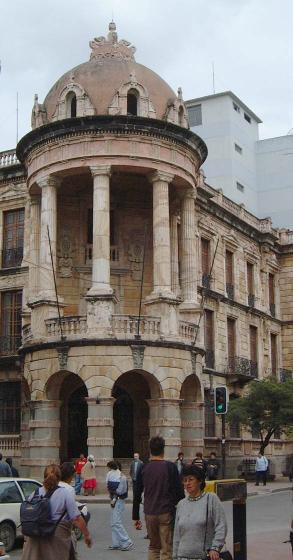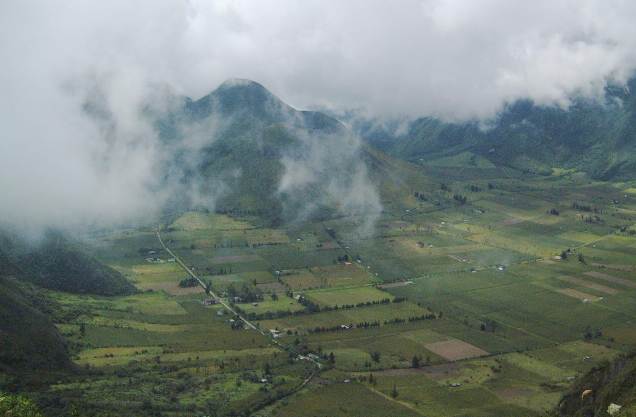
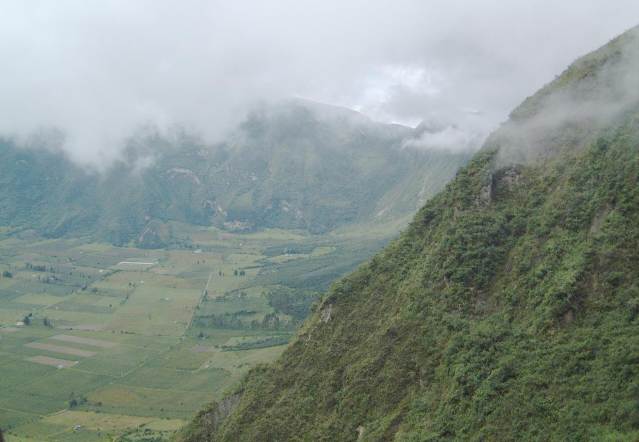

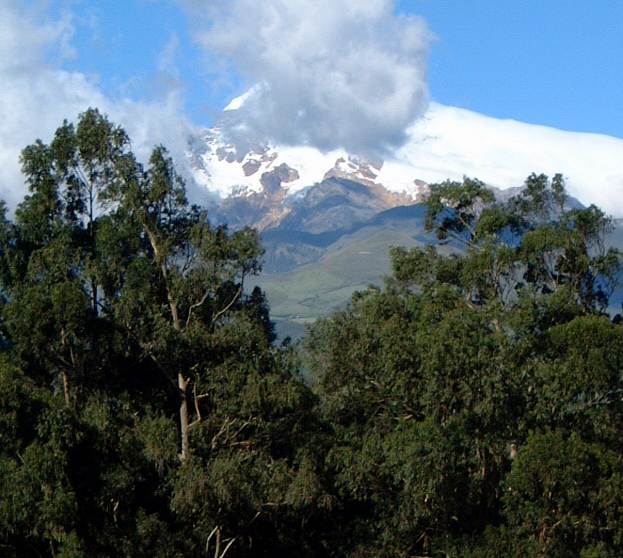
Pululahua (near Quito) looks at first like an Alpine valley, but when you look
around, you see that there is no way for a river
to flow out of it. It is in fact the caldera of a huge
extinct volcano.


The Incas conquered present-day Ecuador relatively late - only about
70 years before the Spanish conquest (Pizarro arrived in 1532).
This was long enough, however,
for them to obliterate the native languages of the region and
substitute their own, Quechua, which is still spoken by
Ecuador's Indian population (in addition to Spanish). The
Inca remains in Ecuador are not as impressive as in Peru,
but are still interesting. This administrative centre,
Ingapirca, is near Cuenca.
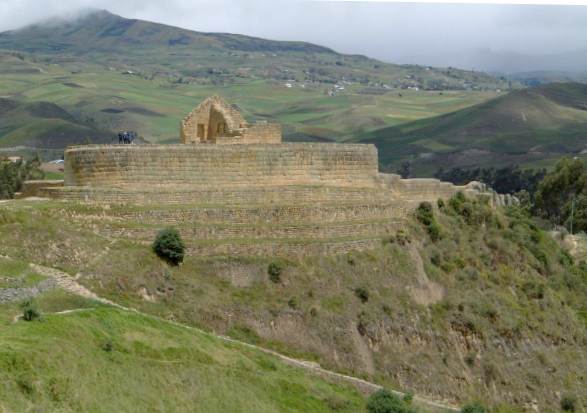
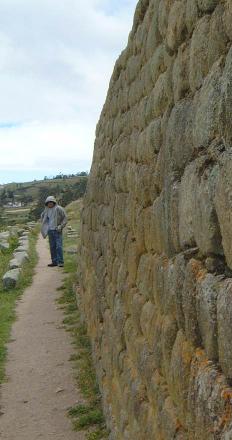 |
As you can see, the stones are not laid neatly in straight rows, like bricks |
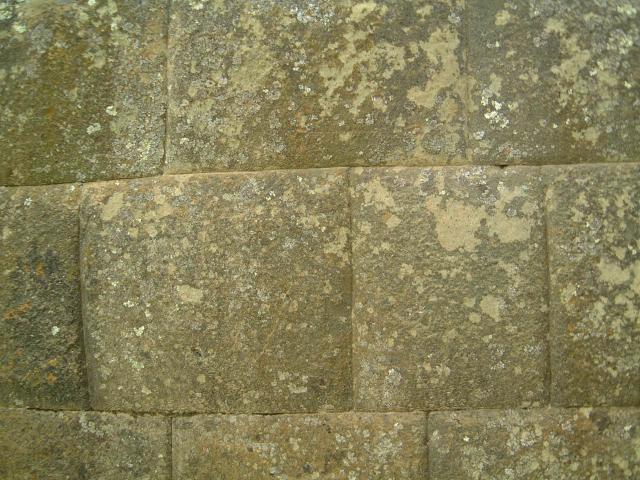
As far as a visitor can tell in only three weeks, Ecuador's
different racial groups live together in harmony, possibly
because the majority of the population is manifestly of mixed
race. Many Indians, however, live in villages and follow
much the same way of life as their ancestors did under
the Incas. Their dress varies from place to place, but
is usually picturesque. This picture was taken in Cuenca.

The Indians run the most interesting markets, for everyday fruit and vegetables as well as for specifically Indian craft products aimed at tourists.
This market is also in Cuenca:
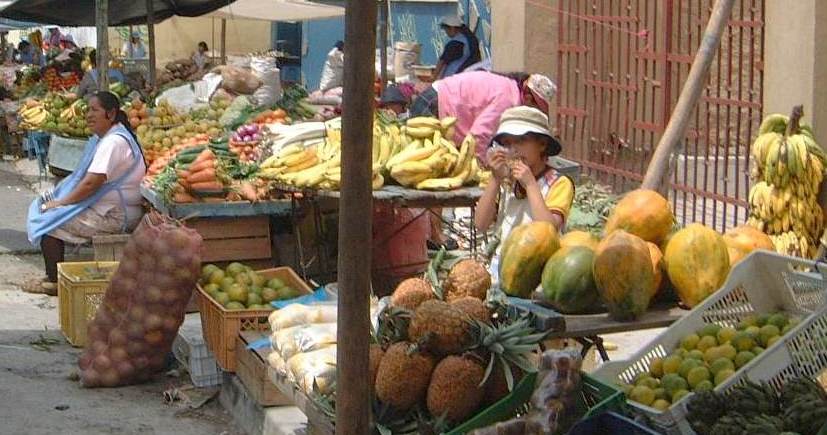
Sometimes the markets include livestock.
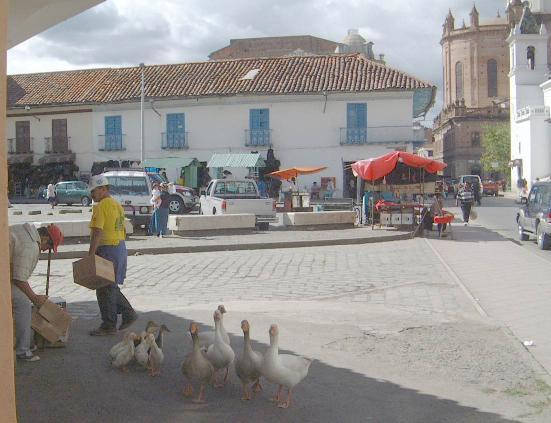
By the way, the relatively clean streets you see here are typical of the parts
of Ecuador we visited.
Both Quito and Cuenca have many fine churches and other buildings constructed in the 17th century. This is in Quito.
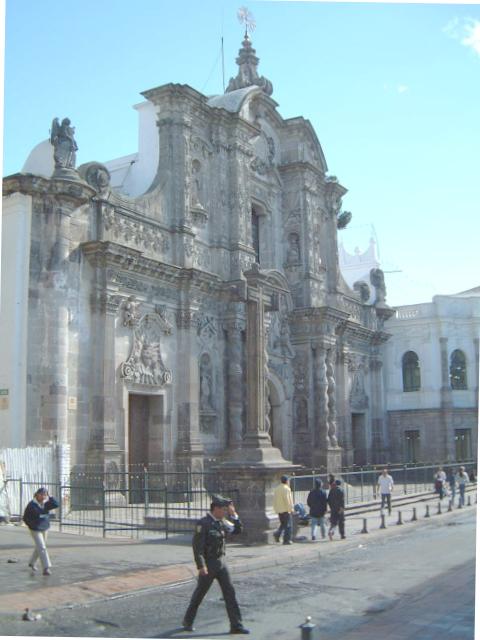 And this, in Cuenca:
And this, in Cuenca:
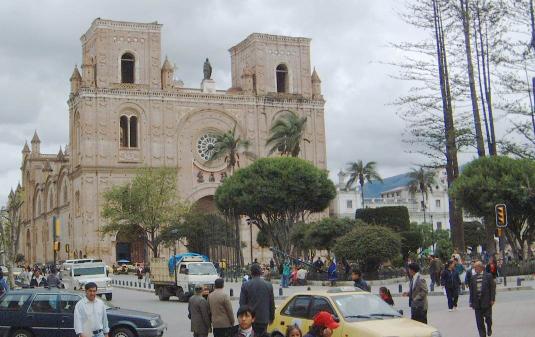
This is an old facade that has been preserved in Cuenca:
